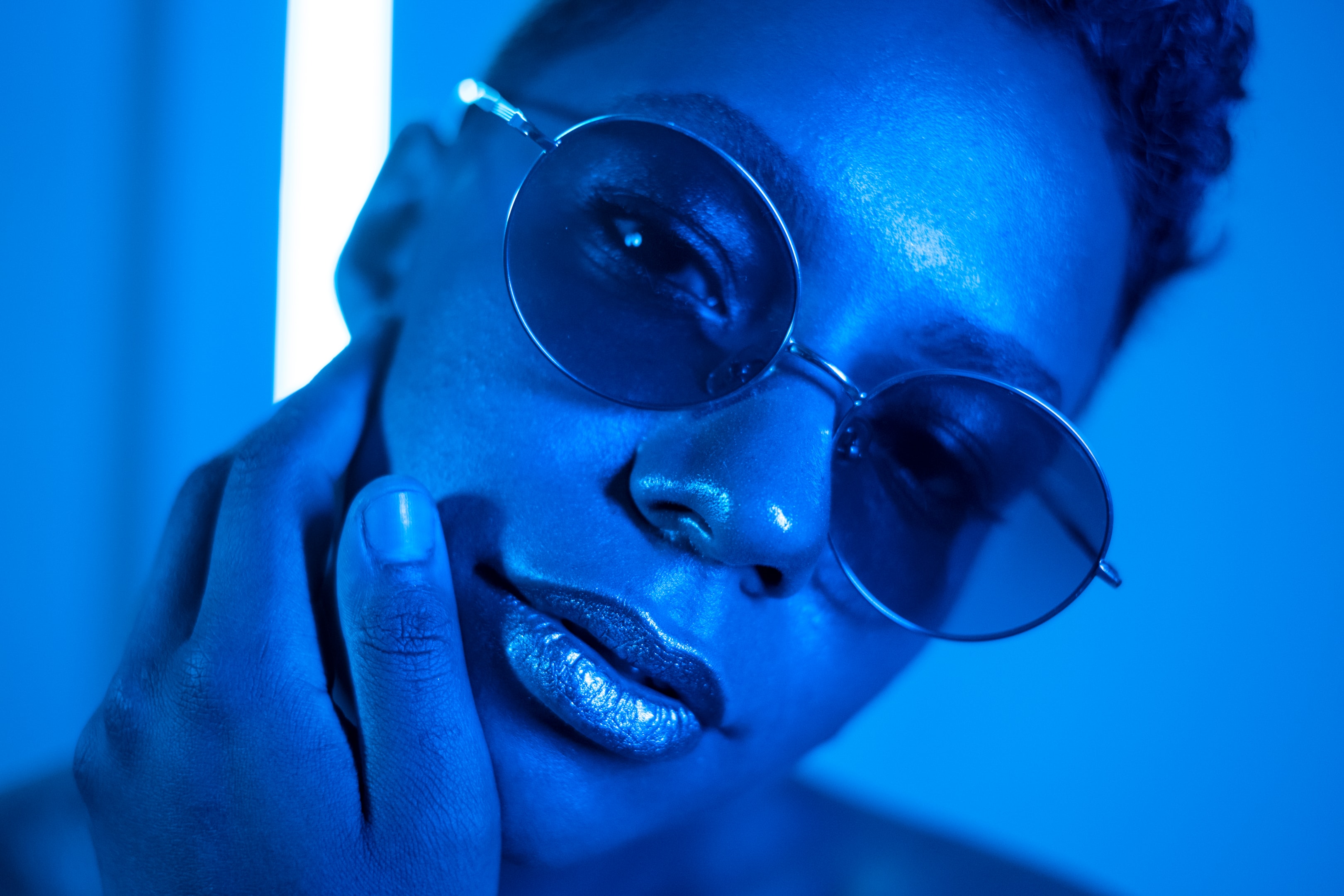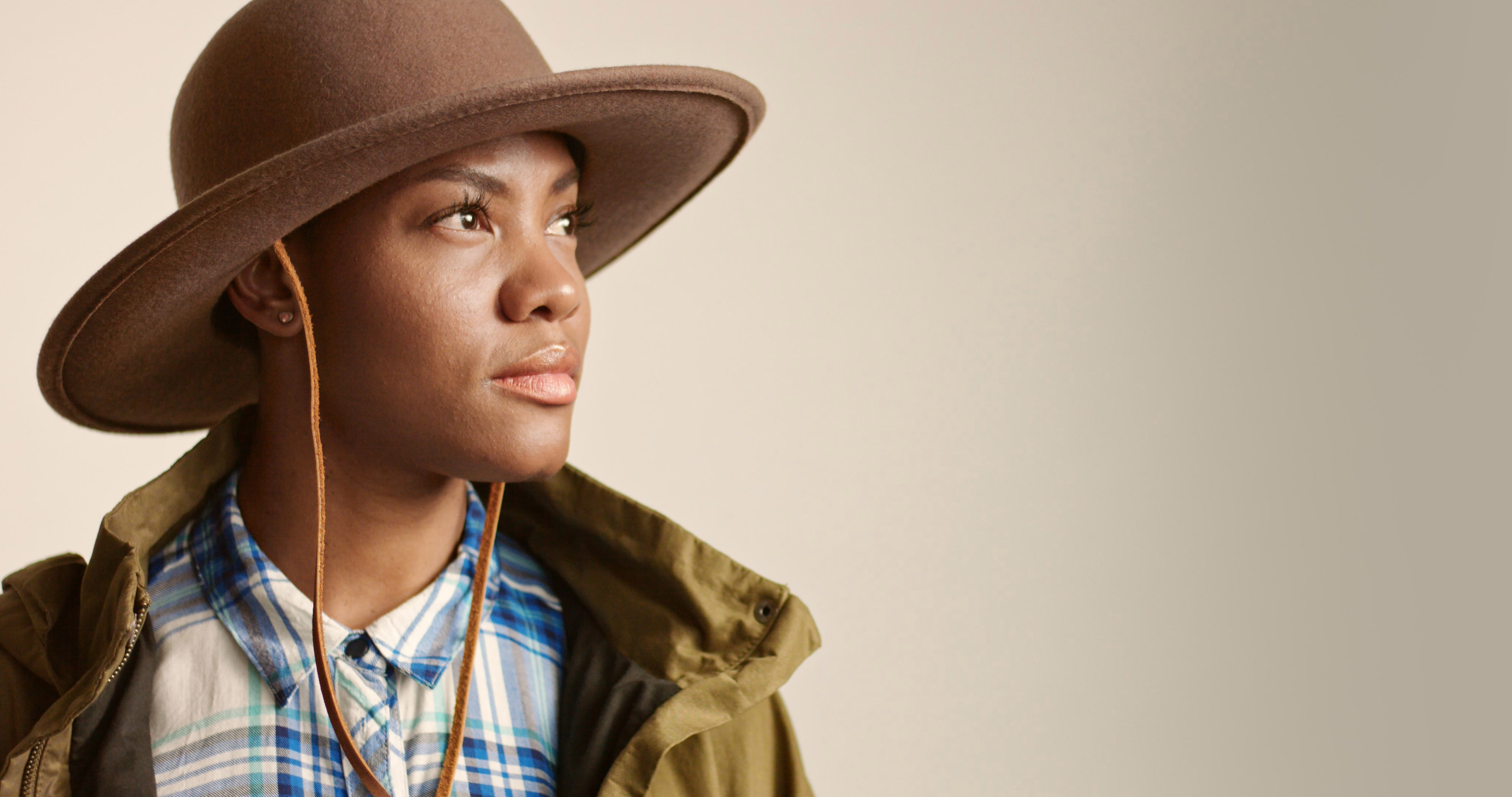UV Light and Your Eyes: How to Stay Safe from Harmful Radiation

We’ve all experienced sunny days and how beautiful the warmth on our skins can be. The warmth from the sun’s rays is something we want to bask in most times but what we fail to realize is that the sun is not sending only this rays and warmth, something more comes with them.
These visible light that we can see contains another invisible light called the UV light. We can feel this UV light as long as the sun touches our body. The UV light, that is known as the ultraviolet light, also has another name called “Beyond violet.”
As we all know, the violet color is one of the rainbow’s color and the last one at the end. This UV light exists right behind it, on the spectrum of light. That is the reason why it accompanies the light reaching us when the sun shines.
Of course, this UV light is super important for our eyes but it can also be harmful to other things. You see, our eyes are incredibly delicate and equivalent to little cameras. Without them, our world will surely feel incomplete.
For example, you’ve experienced sun burn, once or twice right? Now imagine that kind of burn on your eyes, thinking about it makes them sting already. The thing is, this burn is not immediate like when you touch a hot stove, it happens slowly that you can barely notice it until a lot of time has passed.
Most of us step outside of our houses with little or no eye protection on sunny days without realizing that our eyes absorb bits of this invisible UV light. Now, think about it, when this occur over and over, years after years, the effect begins to add up.
Even a smooth surface will become an eyesore when keep applying tiny scratches every single day, for years. That is what long-term exposure to UV light means to the eye because it will cause serious eye problems later in life.
Reading about all this is a bit scary but now that you will have a proper understanding of everything about UV light, you have gotten the power to protect yourself, so don’t fret it.
The hack to preventing sunburn and long-term damage on your skin is by applying sunscreen. How about you apply sunscreen (preventive measures) to our eyes too? The best sunscreen for our eyes is the sunglasses because they are capable of protecting our eyes from the harsh sunlight.
Have you ever noticed that when you are exposed to much of this UV light or any bright light, you develop headache? That’s because it is harmful to some parts of the eyes don’t feel comfortable with these light due to the harm they causes.
A Broader View of the UV Light

The UV light energy is very fascinating. It travels in waves like that of the ocean but this one is very tiny and moves with the speed of light. You can imagine how fast that is.
The theory of UV light started over 200 years ago with Johann Ritter who is a German scientist. The different colors of light was the experiment he was working with initially before something caught his attention.
Some chemicals he placed beyond the violet end of the visible light spectrum reacted violently but nothing was visible to him. This got him intrigued so much that he decided to research better to see what kind of wavelength had a shorter length than the vibrant violent at the end of the spectrum.
With this discovery, another path of research opened to understand the vast electromagnetic spectrum that solidify the claim that our eyes can only capture a small fraction of the light that truly exists. In this article, we will be discussing deeply into the invisible world and talking about the different forms of ultraviolet light.
We will discuss their distinct characteristics, effects, and what needs to be known about them. It is time to take up your pen and jot out strong points that will be helpful for future purposes.
The UV-A Form
This light is very sneaky but persistent because of the strong qualities. Among the ultraviolet light spectrum, it has the longest wavelength because it is a bit more spread out. One interesting about this light is that, because of the long wavelength of about 315-400 nanometers that spreads out, it carries less energy since it is more intense relative.
Another twist is that, this longer wavelength is the secret to the immense speed. It makes it travel deeper through medium in the blink of an eye. It also contributes to 95% of the light reaching the earth. This interesting light is the major culprit in skin aging. Funny enough, the sneaky ability doesn’t make it react quickly on the skin because it doesn’t cause the immediate redness of a sunburn.
It’s a silent enemy that works beneath the surface. UV-A slowly break down the important fibers present in the skin, such as collagen and elastin that keeps our skin firm and smooth. With the continuous action of this light on our skin, wrinkles will begin to show, fine lines will be obvious, and there will be leathery texture. This process that we have explained above is what we call photo-oxidation, where light causes chemical reactions that damage cells.
Again, this form of light also threaten the peace of our eyes because it can penetrate right through the front of the eye and reach the retina, the light-sensitive layer at the back. The frustrating thing is that, whatever we use to block other light doesn’t stand a chance with this light. It can easily pass through the clouds, straight through ordinary window glass to touch you indoors if you sit by the window, cause sun cast on cloudy days, and much more.
You’ve seen or experienced tanning right? This light passes through the tanning beds and give the skin a bronzed look. It can also be present in backlights which makes white clothes glow in a dark room. So many qualities for this light that can cause skin cancer because it reaches the dermis, which is the second skin layer that is very deep down the skin organ.
The UV-B Form
In the ultraviolet rays, this form of light is considered very energetic because of the wavelengths that are shorter than that of the previously discussed one, UV-A. It has a wavelength of about 280 and 320 nanometers. This is the menace behind the sunburn experience.
Have you ever encountered or experienced sun burn? It can be very painful and make you look all red like a ripe palm fruit. The UV-B light damages the DNA in our skin cells and immediately, we will experience inflammatory reaction.
Another wicked effect it has on the skin is that it contributes to skin cancer alongside UV-A and also stimulates the production of melanin, the pigment responsible for tanning. They both accumulate over the years and increase your risk steadily. However, this light is not all about bad news, it has its good side too. It is the beauty behind the production of Vitamin D by our bodies which is very important for strong bones and a healthy immune system. It doesn’t have to do too much, it just touches our skin and the system picks up the command to produce the essential vitamin.
When it comes to dealing with the eyes, UV-B affects the cornea. When it is exposed to this light, it can cause sunburn on the part and if it happens continuously, it can contribute to cataracts development. We all owe a thank you to the ozone layer that is our protective shield from the highest danger of this light by absorbing most of the light before it reaches the earth depending on factors like location, time of year, and altitude.
Another irony is that UVB light treatment, sometimes called narrowband UVB, is used to treat various skin conditions, including psoriasis, eczema, and conditions like polymorphic light eruptions. It damages the skin but is still useful in the products that can prevent skin damage. Interesting!
The UV-C Form
We are now at the most intense version of the ultraviolet light. It has the shortest wavelength range of about 100 to 280 nanometer and is the most vibrant of the three common forms. UV-C has immense power that is extremely harmful to living organisms, including you and I. The power is so much that it is the culprit behind severe cellular damage that breaks down the building blocks of life.
However, nature is wonderful because almost all naturally occurring UV-C light from the sun is completely absorbed by the earth’s atmosphere before it reaches the earth surface, the ozone layer being the biggest player. Thanks to this wonderful design, we don’t have to worry about natural exposure to this form of light.
Interestingly, humans themselves have learned to use artificial sources as a means to create UV-C light. Examples are the special UV sanitizing bulbs and UV lamps. Why this? Because of the potent germ-killing abilities. The danger of this light has been turned around for useful practical applications where necessary and effective.
UV-C light is known to be widely used in germicidal lamps for surfaces’ sterilization of the air, hospital waters, laboratories and public spaces. It contributes to the effective way to wipe out bacteria, viruses, and other harmful microorganisms because UV-C radiation damages the nucleic acids (DNA and RNA) of these microorganisms, preventing them from replicating and causing infections. That is why it is a tool for cleanliness and health.
The Extreme Ultraviolet (EUV)
This is beyond the UV-C form and guess what? they are extremely powerful, just like their name. With a shorter wavelength of less than 120 nanometers, they are considered ionizing radiation and used in advanced technology like lithography techniques for the printing very small features on semiconductor chips. This energy is higher than VUV and is found in space, emitted by very hot objects like the sun’s corona and it is completely blocked off the earth’s surface so that pose no direct threat to people on ground level from natural sources
The Vacuum Ultraviolet (VUV)
The Vacuum Ultraviolet (VUV) have extremely shorter wavelength of between 10 and 200 nanometers and carry more energy. Just by the name vacuum UV, it gives you the idea of what its main characteristics look like because it is so easily absorbed by air so it can only travel successfully in a vacuum. What does this mean? you cannot find it floating around in the atmosphere so we cannot breathe it in.
They exist mostly in very specific environments like the space where the natural vacuum exist or in highly specialized labs on earth. They are useful for both engineers and scientists because they use them for ultra-energetic cutting edge research and technologies like making tiny computer chips or sun’s atmosphere studying, spectroscopy and nanofabrication.
UV Light and Your Eyes

Now that we’ve walked through the UV light world and seen how they can be and how distinct they are, you can understand their relationship with our existence.
The ultraviolet radiation from the sun has significant relationship with our eyes way more than we can ever realize. It’s no news that our eyes are incredible and very delicate organ that helps us see the visible spectrum of light.
However, in this process, they are exposed to the invisible UV wavelengths that can travel through the air. Since we have the knowledge of these lights, we can now protect our eyes from them.
The Connection of UV Rays to our Eyes
The main channel for UV rays getting into your eyes is through direct sunlight. On days when the sun is high and mighty in the sky, the powerful ultraviolet radiation is directed straight towards us, basking the entire planet and not sparing our sensitive eyes.
You don’t even have to look directly at the sun. They are present in huge amount from reflected light. You will encounter them from the bright sand, on the water surface, and dazzling white snow. This ultraviolet radiation moves directly into the human eye and can sometimes deliver an even higher dose of UV exposure than direct sunlight because they come from unexpected angles.
The ultraviolet lights coming from artificial sources like the UV lamps used for tanning beds, powerful UV sanitizing bulbs can be very intense so they require careful handling to avoid accidental UV exposure to your eyes.
Link Between UV Light and Ocular Migraines
How exactly do they connect? Ocular migraine and UV light are not directly related because UV exposure is not responsible for it but in some cases, it can act as a migraine trigger.
Ocular migraine is that condition that makes you see strange patterns, shimmering zigzags, bright flashing lights or twinkling lights that float across your vision. Sometimes, you can even experience blind spots that will cause a moment of temporary vision loss or temporary blindness.
All these visual symptoms points at migraine visual aura and these visual disturbances can happen with or without a headache, making them quite a mystery. Some humans possess a natural sensitivity within their brain that makes them prone to these primary headache disorders. Just like a push, UV light serve as an external factor that start the migraine aura experience.
The thing is the ultraviolet radiation itself doesn’t create the problem but can certainly make existing sensitivities flare up or exacerbate them for those already prone to migraine attacks. This serves as a reminder of how external forces can impact our internal well-being.
Specific Eye Conditions Linked to UV Exposure
Photokeratitis
You might have heard a story of someone going out to the beach to play all day with friends and having maximum fun, only to get home with a red skin. This is due to a bad sunburn and it can also happen to your eyes.
Photokeratitis occurs when the clear front part of your eye which is the surface called the cornea is exposed to too much UV light and your eyes get a sudden, very high intensity dose of UV radiation.
The reflection from the things UV light shine on can serve as distribution channel for the light to get into your eyes and they are stronger than you think. That’s why people sometimes experience this problem after skiing, hiking, or swimming outdoors for a long time without eye protection.
One tricky thing about this condition is that you don’t notice it right away. The discomfort usually shows up a few hours later when the effect sets in. It makes your eyes swollen and sore, vision get blurry, and feels like something is stuck under your eyelids. Your will be under intense eye pain, have excessive tearing, redness, and extreme light sensitivity.
Even blinking doesn’t help in this situation so you don’t have a choice but to visit your eye doctor, and can sometimes lead to temporary blindness if it is very severe. The doctor will be the one to guide you through the healing process so it can get better on its own within a day or two. You have to rest your eyes, avoid screens and bright lights, and stay in a dark room for the prescribed eye drops to work faster and better for the pain.
In order not to experience such pain again, the doctor will also explain ways to prevent it. It sounds serious but it’s not that complicated, it’s just a sunburn of the eye that will go away with a little care and awareness so you can avoid it next time.
Cataracts
You know there is a perfectly clear window in your eyes that is called the lens right? This lens helps the light coming into your eyes focus on the retina, giving you a clear vision in return. When this window is no longer clear like it should be because of the cloudy or opaque condition, you are experiencing cataracts.
Cataract is said to have attacked an eye that the lens is like looking through a foggy pane of glass. As people get older, they stand at a higher risk of developing one and can accelerate vision loss in them. So how is this related to UV light?
There is a very strong link because it is an after effect of prolonged exposure to UV light, especially the UV-A and the menace behind sunburn, UV-B. Chemical changes occur in the proteins of the lens and gradually leads to clouding. The cumulative effect as more of this rays absorb over your lifetime causes higher risk and impact on clear vision. This can range from slight blurriness to significant haziness, making daily tasks like reading or driving much harder.
The lens will not be able to focus well on light and this changes doesn’t happen fast until the lens has gotten become cloudier, making it harder to do anything that has to do with immense clarity like recognizing faces or driving. Lights may start to look too bright because you will be highly sensitive to it, and colors may seem dull, giving you the vibe of a dirty glasses that needs to be cleaned.
Other contributors like eye injuries, medicines, or health problems e.g., diabetes can also trigger the condition. Stop exposing your eye to too much sun without any means of protection. In some rare cases, babies can be born with cataracts too.
Ways to notice that you have cataract is when your eyesight is getting worse even when you use glasses, if you find it hard to see clearly at night or notice a glare when looking at bright lights. You can also feel like everything is slightly out of focus or see double of your images. If by chance you are experiencing any of this, then visit your eye doctor so they can look at your eyes using a light and special equipment to check the lens.
Want to hear something great? Cataracts can be treated, thankfully. Your changes begin from having brighter lighting at home, changing your glasses to a stronger one, and taking care of your eye health. But if the cataract keeps growing and causes serious problems with seeing, then surgery is usually the best option. This surgery is safe and common, all the doctor needs to do is take out the cloudy lens and put in a new one which is clear.
After a successful cataract surgery, most people see much better and clearer so they are free to continue doing everyday things like reading, walking safely, or enjoying time with family. Some still need glasses, but their overall sight is much clearer than before. There’s no certain way to prevent cataracts, but some healthy habits and lifestyle may help out and keep your eyes healthy. You should think about wearing sunglasses, eating healthy foods like fruits and vegetables, not smoking, and having regular eye checks to make a big difference.
Pterygium (Surfer’s Eye)
Does Surfer’s eye sound familiar? You can also call it another name which is Pterygium. This condition is one in which is a small, pinkish growth that starts on the white part of your eye and can move toward the black part in the center, where the cornea is located. This is quite scary, right?
Pterygium often looks like a fleshy wedge-shaped growth or a wing and usually starts from the white part of the eye, to the side of the eye, which is the conjunctiva that is close to your nose and slowly grows towards the cornea. Yes, it might appear and sound scary but it is usually not harmful at first and may not even cause problems right away until some time passes.
The combination of wind, sun, and dirt gives birth to this condition because they can irritate the surface of the eye over time. That irritation can cause the tissue to grow abnormally, which you will not notice in the early stage besides the appearance of the growth.
However, the bigger it gets, some symptoms become clearer and more obvious. Your eyes may feel dry, itchy, or gritty, it will feel like there are sands in them. They can even get red or sore and if the growth keeps getting larger and reaches your cornea. At this stage, it has the power to change the shape of the eye’s surface, which may lead to blurry vision.
It is quite unfortunate that the exact source and reason why some people get it while others don’t is still very unclear but doctors are sure about outside factors increasing the risk. People who live or work in hot, sunny climates or in dusty, windy areas are more likely to develop the defect and this condition is more common in adults than in children.
Wearing a wide-brimmed hat that keeps the sun off your face and eyes can serve as a preventive measure for this problem. You can also consider wearing sunglasses that block UV rays. In dusty or windy conditions, wearing eye protection such as safety glasses or goggles can stop dirt and wind from irritating your eyes.
If you already have a pterygium, your doctor may just keep an eye on it if it’s small and not causing any trouble. They might recommend using eye drops to reduce dryness or redness. But if the growth starts to affect your vision or becomes uncomfortable, it might need to be removed with surgery.
Sadly, even after the successful surgery, it can come back, especially if you keep getting too much sun or don’t protect your eyes from the harmful light. So, it’s very important to continue wearing sunglasses and taking care of your eyes, even after treatment so you don’t fall back into the dilemma.
Macular Degeneration
Macular degeneration is an eye condition that slowly harms your central vision. This is the part of your sight you use when you read, drive, or see someone’s face clearly. It affects a small area in the center of the retina called the macula.
The macula is a small, vital part of your retina that is responsible for your central vision and sharp focus. The retina is like a screen at the back of your eye, and the macula helps you see fine details. When the macula gets damaged, you may still see from the sides, but the middle of your vision becomes blurry or blank, this is referred to as macular degeneration.
When your central vision is blurry or absent, this condition is the cause. Several years of being out in the sun without protection can slowly cause stress to the cells in your eyes because they work very hard to keep your vision clear. When they are exposed to UV rays too often, they may start to wear out or stop working properly, causing war and tear.
Some research suggests that prolonged exposure to ultraviolet radiation might play a role in its development or worsen its progression. The condition is a complex condition with many risk factors attached but protecting your eyes from UV rays is still a wise step to take for overall eye health.
Eyelid Cancers (Skin Cancer Around the Eye)
Most times, we easily forget that the skin around our eyes is just as vulnerable to the sun as the rest of our body. Our eyelids are made of the normal human skin and tissue, and they are highly susceptible to skin cancer because they are often exposed to UV radiation and are very thin.
Eyelid cancer is a type of skin cancer that can grow on the skin around the eyes. Most people don’t think about protecting their eyelids even when applying sunscreen on their faces. Long periods in the sun without protection can slowly cause changes in the eyelid skin.
Checking your skin regularly is very helpful especially if you spend a lot of time being exposed to sunlight. When you notice anything new on your eyelid that doesn’t go away after a few weeks, it’s a good idea to see a doctor, it may not be serious, but it’s better to be sure.
Basal cell carcinoma, which usually grows slowly and doesn’t spread to other parts of the body is one of the common skin cancers. But when left untreated, it can cause damage to nearby areas, especially around the eyes, nose, and cheeks. This condition might look like a small bump or lump that is shiny or pearly, sore that doesn’t heal, or skin that looks scarred or crusty.
Squamous cell carcinoma is less common but can be more serious because it tends to grow faster and has a slightly higher chance of spreading to other parts of the body. It can look like a red, rough patch, sore that bleeds or crusts over, or a thick bump that keeps getting larger. This cancer can also show on the upper eyelid or other sun-exposed areas.
General Discomfort
Beyond these specific conditions, UV exposure can contribute to general visual problems and discomfort. UV light can worsen dry eyes and can be problematic for contact lens wearers since they are at the risk already. General eye irritation and inflammation can also result from too much ultraviolet light.
How To Protect Your Sight
What a long journey we have taken through the world of UV light and several things attached to it while it affects on eyes. The most awesome piece of information is that UV protection is readily available and effective.
We will be discussing a few steps to take in order to prevent ourselves from the effect of this harmful UV light.
Wearing Sunglasses

Sunglasses have categories and types. On your next shopping for a pair of sunglasses that will protect you from UV light, don’t forget to check the labels for 100% UV protection or UV400 because they are specially designed to block out nearly all ultraviolet wavelengths that can be harmful to your eyes.
Some of their lenses have UV absorbers built into the material, others have coatings that block UV on the surface which is quite interesting if you ask me. Lenses with mirrored or darkened finishes might reduce glare, but they don’t always block the light. Wrap-around sunglasses are even better because they block UV from the sides so they don’t sneak past regular frames.
Wearing Hats on Your Head

The best option is to put on a broad-brimmed hat because it can shade your face and eyes from direct sunlight. This is especially helpful in the middle of the day, when the sun is directly overhead and extremely hot. Baseball cap can also play the role to some extent and it is better than nothing. These hats serve as a portable shade system.
Go for Contact Lenses with UV Blockers
As someone running away from UV light effect, pick the contact lenses that come with UV filters built into them because they will offer extra protection for the cornea and inner parts of the eye. However, because they don’t cover the white parts of the eye or the skin around it, you should always use them with sunglasses, not for replacements.
Time or Reduce Your Outdoor Activities
The sun is strongest and in its full glory between 10 a.m. and 4 p.m. If it is possible, try to do outdoor activities outside of these hours but if you cannot escape it, then you should seek shade and protection quickly when you can and use extra UV protection as much as possible to shield yourself.
It doesn’t hurt to be extra careful when you work, walk, or play near water, snow, or sand, since these surfaces can reflect UV rays back up at you, they don’t even need your permission to this. In return, they increase your exposure even when the sun isn’t directly shining at you. Also, remember that the closer you are to the equator or the higher your altitude, the stronger the UV, so be mindful when travelling or hiking in sunny areas and take proper caution.
Run Away from Tanning Beds and Lamps
They use high-intensity UV lamps to darken the skin quickly which is highly dangerous and these rays are even more concentrated than sunlight, which can increase the risk of skin cancer and eye damage even faster. There’s no such thing as a “safe tan” from artificial UV. It’s better to use bronzers or sprays if you want a golden look by force.
Learn About Artificial UV Sources
Just like we have been discussing from the beginning of the article, UV can be natural or from man-made sources like black lights, welding arcs and other ones. These are often used for cleaning, decoration, or industrial work so be mindful if you work with or near these tools. Ensure you always follow safety guidelines by wearing proper protective gear and never look directly at the light.
Get Regular Eye Exams from Your Doctor
Even with your fine vision, a regular check-up with an eye doctor can help catch early signs of UV-related damage. Some of these problems develop slowly and don’t show symptoms right away but a quick visit once a year or so can protect your sight for life.
Blue Light vs UV Light
Some people mistake blue light for UV light but they are totally different. Blue light is at the edge of the visible spectrum, not beyond it. While it doesn’t carry as much energy as UV, it can cause eye strain, especially from screens. UV and blue light both need our attention, but they affect us in different ways.
When to Get a Doctor Appointment
When you see flashing lights, experience sudden vision loss, or have eye pain that refuses to go away, it’s time to ring your doctor’s bell. These symptoms are not something to ignore so go for a professional advice and check up.
Conclusion
Ultraviolet radiation is just a natural part of life on our planet, Earth. It’s part of the electromagnetic radiation that the sun sends to us every day. We get to enjoy the good part but should be always prepared to block off the harmful effect especially in the human eye which is delicate and sensitive to shorter wavelengths.
Do everything to keep yourself healthy and safe. Remember the things we have listed earlier and be closer to your eye doctor if you are at a higher risk. Most importantly, take UV protection seriously not just for today, but for the years ahead.
Our eyes do so much for us by helping us read, explore, create, and connect with family and friends. Let’s return the favor by protecting them every day, jealousy, and safely.
Bibliography
https://www.aao.org/eye-health/tips-prevention/sun
https://www.nei.nih.gov/about/news-and-events/news/protecting-your-eyes-suns-uv-light
https://www.hopkinsmedicine.org/news/articles/2019/07/how-to-protect-your-eyes-from-uv-damage
https://www.aoa.org/healthy-eyes/caring-for-your-eyes/uv-protection
https://my.clevelandclinic.org/health/diseases/15763-photokeratitis
https://www.zeiss.com/vision-care/en/eye-health-and-care/health-prevention/the-benefits-and-disadvantages-of-uv-light.html






